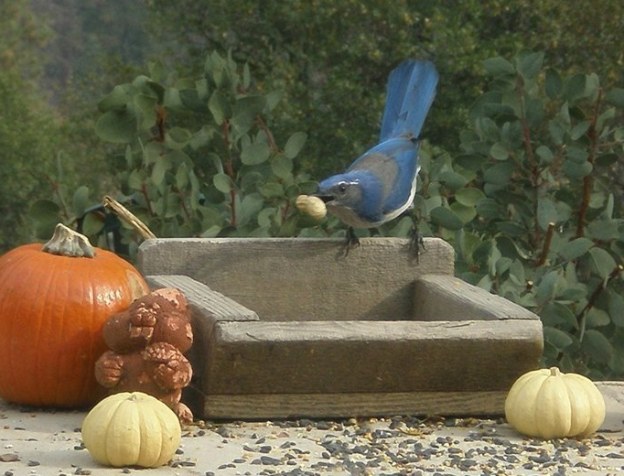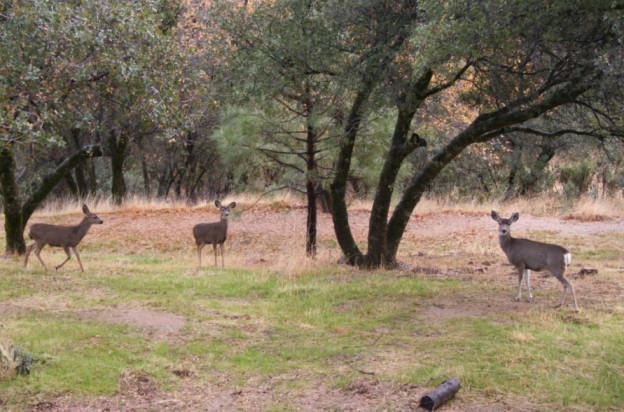A Backyard Habitat is a transformation of your garden into a place that provides the things wildlife need to live there. You also ‘reduce the civilization’ there to make it more welcome and safe for small, beautiful creatures. My mother did this in 1970 in the suburbs of LA and I have established a wildlife habitat now that we live here in the country.
It’s a bit presumptuous, I think, to say you have done anything having to do with wildlife here next to the forest considering the wildlife and plants have done very well without you all this time. What I mean by applying for a Certified Wildlife Habitat, I guess, is that I will vow to be a steward of this land while I’m living here on our land in the Sierra foothills.
The National Wildlife Federation certification program can easily be followed to make a sustainable habitat for the wildlife in your area. But why?
Why create a backyard habitat?
Whether it’s an apartment balcony or a 20 acre property, it’s fascinating, and joyful, to be able to watch the birds and insects thrive in your garden. Provide food, water and shelter as well as reduce the amount of chemicals you use in the garden, then just wait and watch!
These are the things to provide in your new backyard habitat:
Food
Preserve and plant more California natives. They have the pollen, berries and foliage the birds and insects like. Some plants for a habitat are oaks, crabapple, pines and cedars. Shrubs that do well in a backyard habitat are Dogwood, Elderberry, Honeysuckle, and Viburnum, Currants and blackberry and grape vines. Other plants that can be included are sunflowers, Black-eyed Susans, asters, marigolds, zinnias, and native grasses. You can add hummingbird and seed feeders if you want, but birds may only need the right plants to feed on.
Water
Another important element for a habitat garden is a water feature. This can be as complex as a re-circulating stream, or as simple as a birdbath made of a flowerpot saucer that you clean and fill daily. Locating your birdbath near a sprinkler can ‘automatically’ refill it often.
Shelter and space to raise young
Animals need brush piles and natural areas to hide from predators and make nests. A large branch or dead trunk can be placed in a flower bed or at the edge of the garden to slowly decompose and provide places to lay eggs and find worms. A small thicket can encourage quail to come to your garden.
Safety
Restrict your use of chemicals in the garden and start a compost pile to use for a natural fertilizer. Mulching, and reducing the size of your lawn are other ways to avoid having weed killers and insect sprays and make your garden safe for the wildlife you want to attract.
And you’re done!
Finally, spend relaxing time in your garden. You are wildlife, too. Make a comfortable spot to sit and you will find yourself ‘out there’ much more often. Keep watch as beautiful birds, butterflies and other small, interesting visitors appear in your wildlife-friendly haven. Whenever you hear bad news on the news, step into your garden and realize that you have made a welcoming habitat for yourself as well!
Things To Do:
Certify your Backyard Habitat
Teachers, you can start a Schoolyard Habitat





7 comments